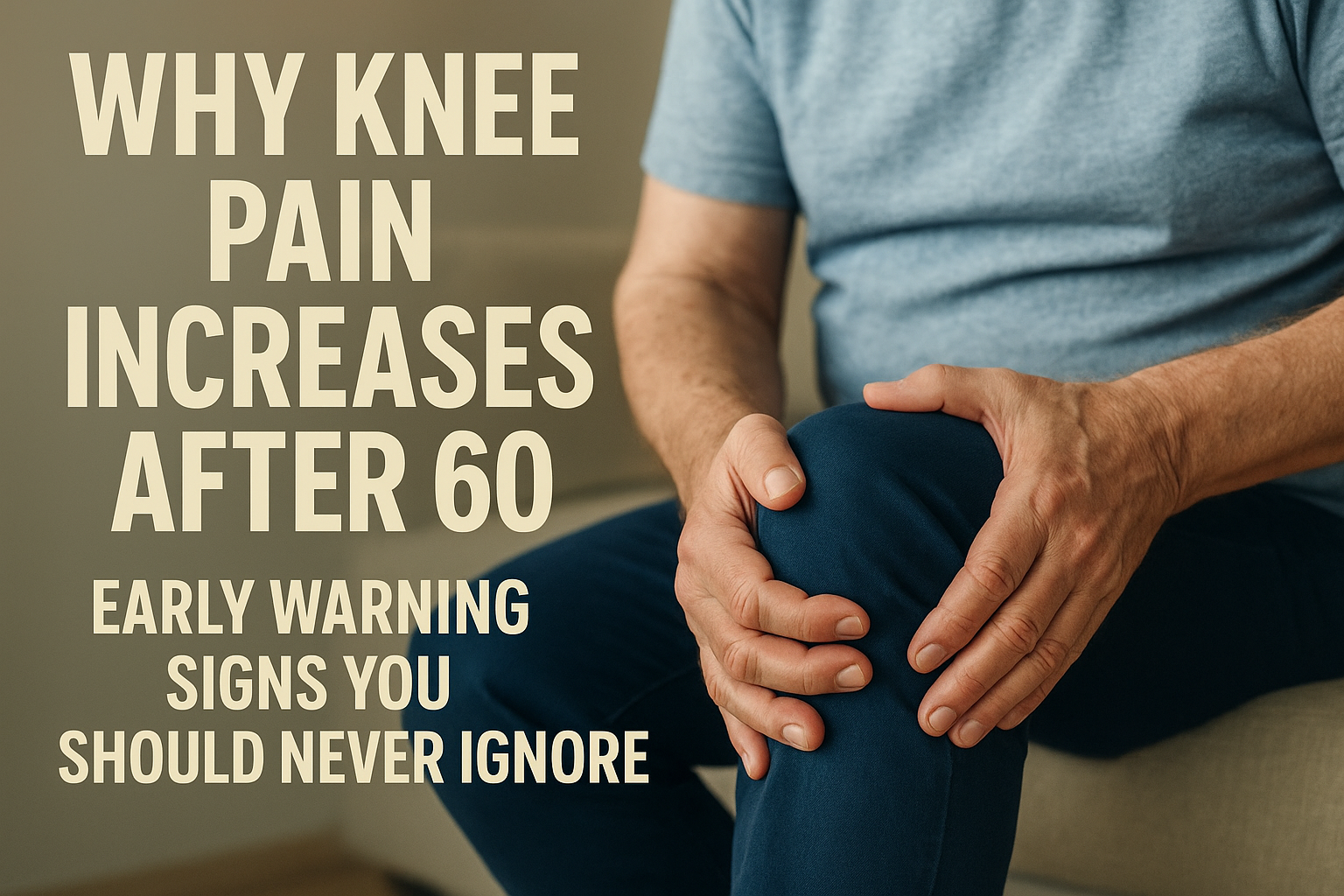Understanding Knee Pain After 60
After the age of 60, natural cartilage degeneration reduces the cushioning in your joints, causing discomfort and reduced mobility. Combined with reduced muscle strength, this can make daily activities more challenging and painful.
Common Reasons Knee Pain Rises With Age
1. Age-Related Wear and Tear
Your knee undergoes thousands of movements daily. With time, the protective layers thin out, leading to joint stiffness and swelling.
2. Osteoarthritis Development
Many seniors experience osteoarthritis, which gradually damages joint surfaces and leads to persistent inflammation.
3. Weak Muscles and Poor Alignment
Aging weakens the quadriceps and hamstrings, causing biomechanical imbalance that places excess stress on the knee joint.
4. Reduced Bone Density
Lower bone strength increases the risk of tiny fractures, especially during sudden movements or minor injuries.
5. Past Injuries
Old ligament tears or meniscus damage can worsen with age and trigger severe pain when activity levels change.
Early Warning Signs You Should Never Ignore
1. Morning Knee Stiffness
If your knee takes time to “warm up” after waking, it could signal early arthritis symptoms.
2. Persistent Swelling
Continuous swelling may indicate inflammation, infection, or fluid buildup inside the joint.
3. Clicking or Grinding Sounds
A sensation of grinding or popping may suggest meniscus degeneration or cartilage defects.
4. Difficulty Climbing Stairs
Pain while climbing or getting up from a chair can be one of the earliest signs of functional decline.
5. Sudden Sharp Pain
Unexpected sharp pain can point to ligament strain, cartilage tears, or underlying knee instability.
How to Manage Knee Pain Effectively After 60
Daily Care Tips
- Maintain a healthy weight to reduce pressure
- Do low-impact exercises
- Apply hot or cold therapy
- Wear supportive footwear
- Consider joint supplements after consulting a doctor
Medical Interventions
- Physiotherapy for muscle strengthening
- Bracing for added support
- Anti-inflammatory medication
- Injections for pain relief
- Minimally invasive surgical options if needed
Conclusion
Knee pain after 60 is common but should never be ignored. Understanding early symptoms helps you take timely action, maintain mobility, and prevent long-term joint damage through proper care.
By identifying risk factors early, seniors can protect their knee health and continue daily activities comfortably. Simple lifestyle changes and expert guidance can drastically improve joint function.
For expert diagnosis and personalized treatment to restore comfort and mobility, visit our Regain Orthocare and begin your journey to stronger joints.

